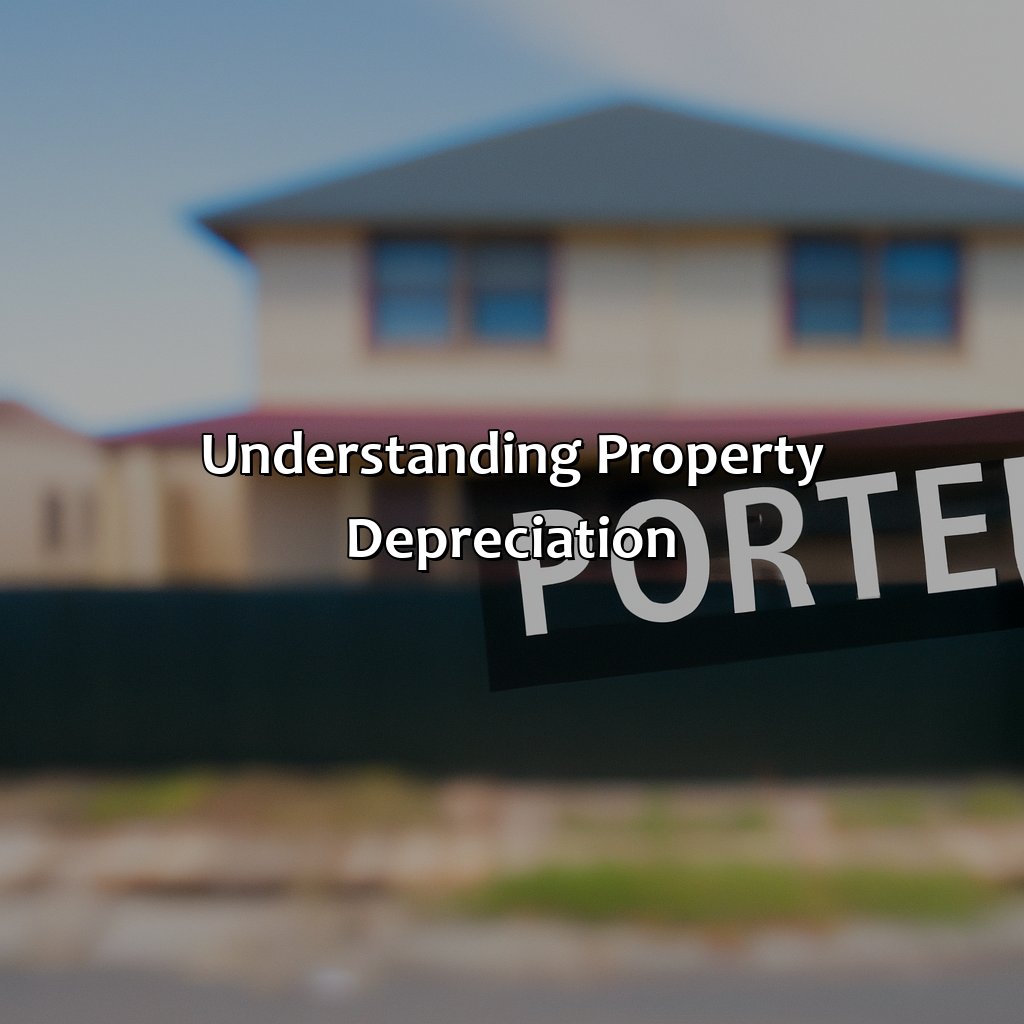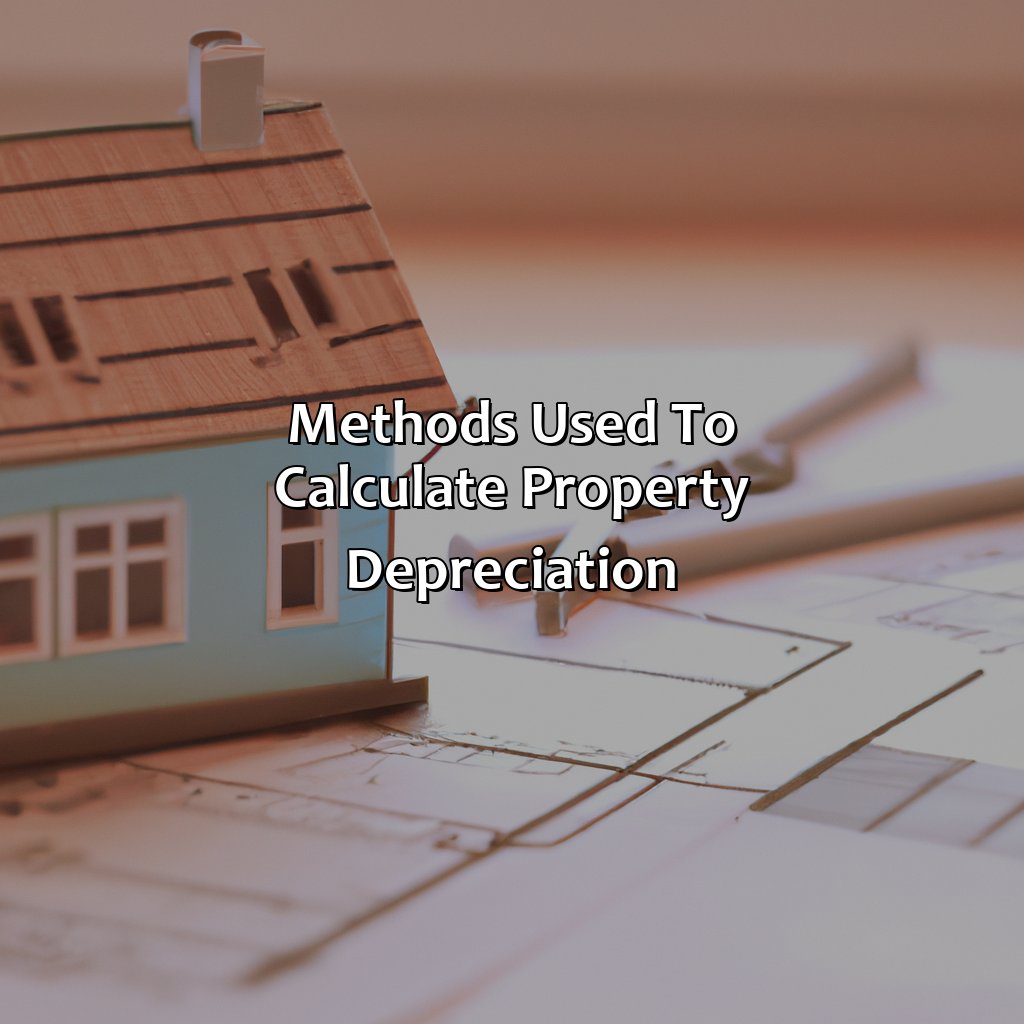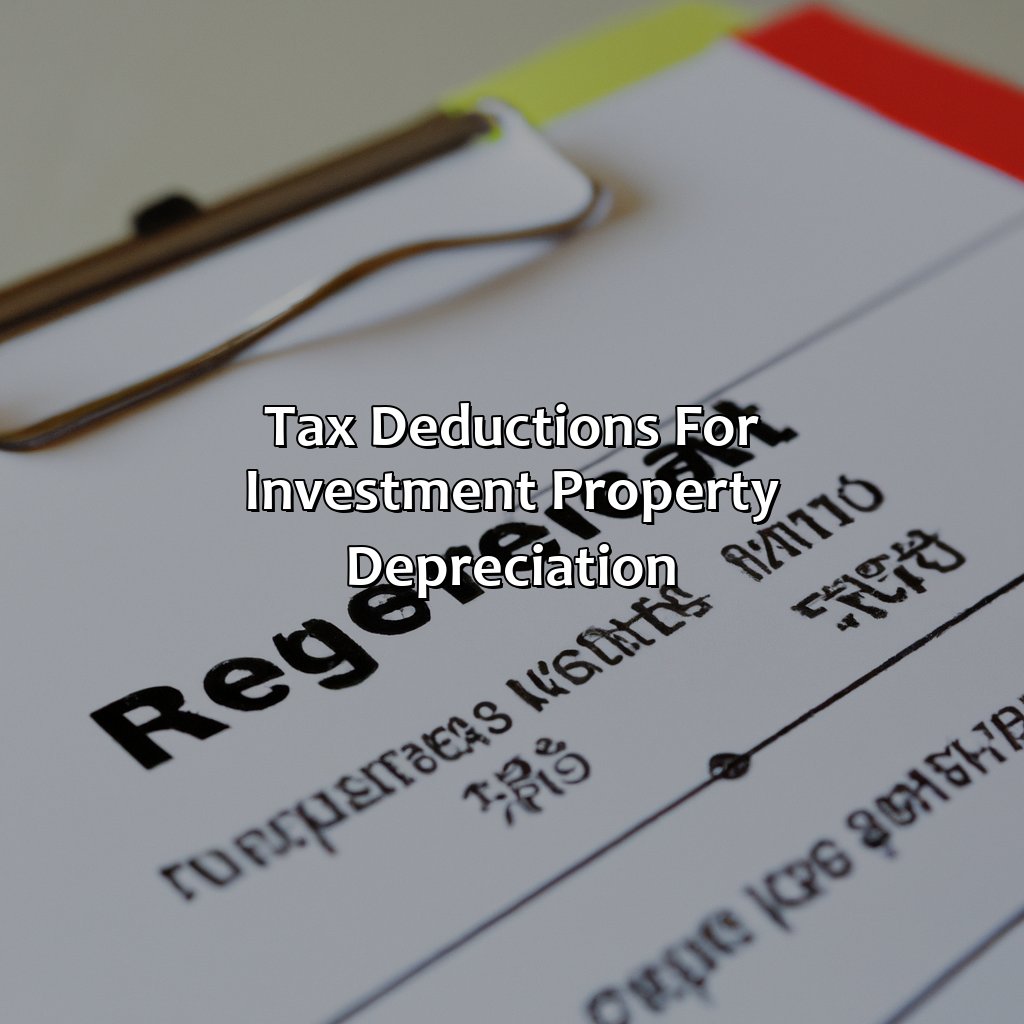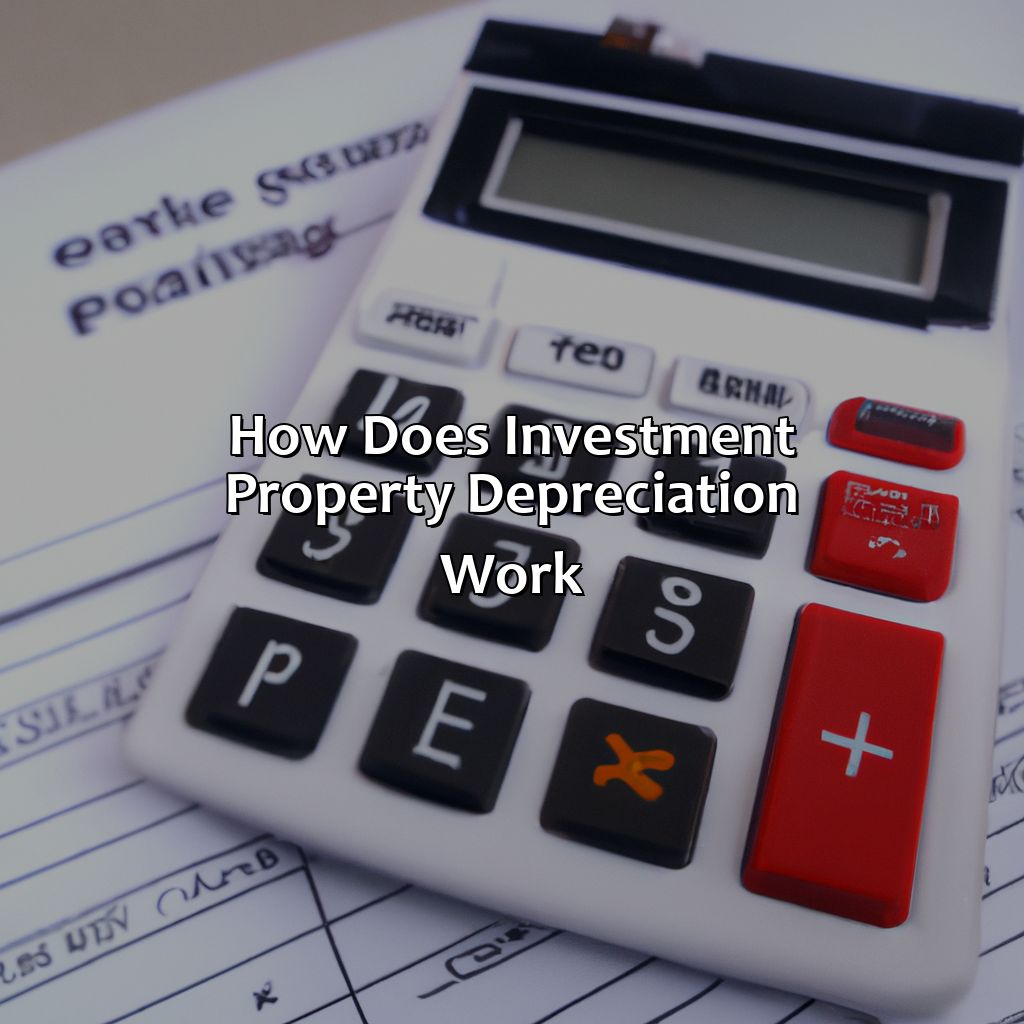How Does Investment Property Depreciation Work?
Key Takeaway:
- Investment property depreciation refers to the decrease in value of a property over time due to wear and tear, and can be used to claim tax deductions on investment properties.
- The age, quality of construction, and location of a property are factors that influence property depreciation and can affect the amount of tax deductions that can be claimed.
- The two methods used to calculate property depreciation are the Prime Cost Method, which spreads the cost of depreciation evenly over the life of the property, and the Diminishing Value Method, which applies a higher depreciation rate in the earlier years of the property’s life.
- Tax deductions for investment property depreciation can vary depending on whether the property is new or old, and whether renovations or improvements have been made. It is important to understand the specific rules and regulations surrounding tax deductions for investment property depreciation.
- Seeking professional assistance, such as from a qualified quantity surveyor, can help ensure accurate calculations of investment property depreciation and maximize tax deductions for individuals and businesses.
Are you confused about depreciation for investment properties? Learn how to maximize your returns with this comprehensive guide on investment property depreciation. You’ll find out how to make the most of your investments without breaking the bank.
Understanding property depreciation
Investment property depreciation can be confusing, but it is essential to comprehend for investors. Depreciation is the decrease in value of an asset over time, including buildings. The reduction in a property’s value over the years can help you claim it as a tax deduction. To understand property depreciation, one needs to be familiar with the intricacies of investing in real estate.
As an asset ages, it suffers from wear and tear, resulting in a decrease in value. It is essential to hire a professional quantity surveyor to assess the property’s depreciation value. The surveyor will prepare a depreciation schedule, which will help you make deductions on your tax return each year.
Investors should note that there are two types of depreciation: capital works and plant and equipment. Capital works relates to the building’s structure itself, while plant and equipment refer to the fixtures and fittings within the property. Both of them can contribute to your total tax deduction value.
It is crucial to keep in mind that there are specific rules and regulations to claim deductions through depreciation. Investors need to seek professional guidance to avoid penalties for incorrect claims.

Image credits: retiregenz.com by Harry Woodhock
Factors that influence property depreciation
Gaining insight into property depreciation? Consider various factors! Age, quality of construction and location of the property are all sub-sections of the ‘Factors that influence property depreciation‘ section. Tackle it to better understand your investment.

Image credits: retiregenz.com by Yuval Arnold
Age of the property
The property’s lifespan affects its depreciation. As a property gets older, it loses value due to wear and tear. The depreciation rate decreases over time, and after a certain point, it reaches a plateau.
Older buildings need more maintenance, which can increase their operating expenses. Additionally, they may not have modern technology and features that appeal to tenants. As such, older properties may have lower rental rates, leading to reduced cash flow and capital appreciation.
However, age is not the only factor. The quality of construction and materials used also affects how quickly a property depreciates. For example, a poorly constructed building will deteriorate faster than one built with quality materials.
To slow down depreciation, investors can undertake regular maintenance to preserve the property’s condition. Moreover, upgrades like modernizing interiors or installing energy-efficient systems can attract tenants and justify higher rental rates.
In summary, understanding how age affects depreciation in investment properties is essential for investors looking to maximize returns on their real estate investments. Conducting regular maintenance on upkeep and upgrading the building to current standards can improve the cash flow and capital appreciation potential of an old property.
Looks like the builders skipped out on quality to save on construction costs, but unfortunately for property owners, depreciation doesn’t discriminate.
Quality of construction
The caliber of the building components utilized in a property’s construction has a significant impact on its depreciation. The level of wear and tear that different materials experience varies, which can cause some structural elements to deteriorate faster than others.
For example, properties with cheap flooring materials like laminate might suffer more wear and tear compared to those with high-quality hardwood flooring. Similarly, if the roofing material used is substandard or low-quality, it may not last as long as high-end roofing solutions.
Therefore, choosing higher quality building materials for your investment property can help slow down the depreciation process significantly.
Additionally, it is essential to keep up with regular maintenance schedules and invest in repairs and replacements wherever necessary. A well-maintained property will always perform better than one that has been neglected or overlooked.
Investors should also consider upgrading certain aspects of their property over time. For instance, replacing old appliances with energy-efficient ones can not only improve a property’s value but also help save money on power bills in the long run.
Overall, keeping an eye on the quality of all construction components in your investment property can have a tremendous impact on its overall depreciation rate.
Finding a good location for your property is like finding a good Tinder match- it can either lead to a hot fling or a disastrous break-up.
Location of the property
The geographical area where an investment property is situated has a significant influence on its depreciation. The location can impact the demand for rental properties and thus the expected rental income. Additionally, government initiatives and infrastructure developments can enhance or devalue a property’s worth.
For instance, if an investment property is located in a sought-after suburb, then it is likely to attract higher rental demand, resulting in increased depreciation deductions. On the other hand, if a building is situated near a noisy or polluted environment like highways or factories, it could decrease the value of the property over time.
Furthermore, properties located in areas with high levels of crime may exhibit lower prices and slower price appreciation due to safety concerns. In contrast, buildings that are situated close to schools will often attract higher rents due to their proximity to education institutions.
Therefore, investing in regions with favourable demographics and strong sociocultural amenities may lead to better rental yields and capital growth prospects. Investing in locations where there is no substantial population increase or economic activity may limit one’s potential earnings from depreciation deductions.
To maximise your benefits related to depreciation deductions, consider purchasing assets with features such as energy-efficient insulation-cooling systems or solar panels. These investments have been proven to lower running costs as well as minimising the environmental impact of your properties.
Calculating property depreciation is like trying to solve a Rubik’s Cube while blindfolded – confusing and frustrating, but worth it in the end.
Methods used to calculate property depreciation
For calculating property depreciation, head to the section of “Methods used to calculate property depreciation”. It provides two solutions – “Prime Cost Method” and “Diminishing Value Method”. These methods can assist in determining the devaluation of your investment property. Moreover, they can help with appropriate deductions for tax reasons.

Image credits: retiregenz.com by David Duncun
Prime Cost Method
One of the widely used methods to calculate property depreciation is the standard cost method, which is also known as the ‘Original Cost Method.’ This method divides the total cost of an asset by its useful life to determine the annual depreciation value. However, there are some limitations to this method, and investors also use other techniques. One such technique that we will discuss in this article is known as the ‘Prime Cost Method.’
To understand this method better, let us look at a table that explains how it works:
| Prime Cost Method | Formula |
|---|---|
| Calculation | (Cost of Asset – Scrap Value) / Useful Life |
| Depreciation Expense | Same amount every year |
The Prime Cost Method calculates depreciation by dividing the asset’s original cost minus its scrap value over its useful life. It then allocates an equal amount for depreciation every year until it reaches zero or scrap value. It provides a more accurate calculation of an asset’s depreciation expense and is often preferred for assets that show steady wear and tear, such as buildings.
Investors or accountants must determine which technique suits their needs best by taking into account factors like asset class, expected lifespan, and maintenance expense.
An investor bought a rundown property with a substantial land component in a historical suburb in Sydney’s Inner West region. After conducting inspections and working out renovation costs, he used the Prime Cost Method to calculate tax deductions on building depreciation expenses over twenty years instead of 40 years using other methods. The result? He was able to claim greater tax deductions sooner rather than later and still collected decent rental returns from tenants paying top dollar for premium living arrangements within walking distance from shops, cafes, and train stations.
Calculating property depreciation using the diminishing value method is like watching a plant wilt in slow motion, but at least the tax deductions still bloom.
Diminishing Value Method
For calculating property depreciation, one of the commonly used methods is the reduction in value method. It involves calculating depreciation by taking into account the declining value of an asset over time.
This method assumes that the assets will lose their value rapidly initially, which will then slow down over time. To calculate the total amount of depreciation, this method takes into account both the asset’s initial cost and its estimated salvage value. The formula for using this method involves applying a set percentage rate to the asset’s current book value.
Unique details regarding this approach are that it is quite complicated than other alternatives, as different types of assets have varying useful lives and depreciation rates. Additionally, various factors influence their depreciation rate, such as wear and tear, age, physical deterioration and functional obsolescence.
To accurately calculate the diminishing value of an asset requires considerable expertise and knowledge in both accounting principles and local tax legislation. As well as ensuring compliance with international accounting standards on financial reporting (IFRS), capital gains tax legislation should also be considered.
If choosing to use such a method for your investment property or LLP (‘Limited Liability Partnership’), consider seeking expert advice or councils from competent authorities beforehand.
By maintaining accurate inventory records for all business assets, investors can ensure they are not paying more income tax than necessary by claiming all eligible deductions under their local rules and regulations. Investors can also maximise their returns by tracking current legislation changes carefully – so that any new incentives or thresholds do not go unnoticed where they may be eligible to claim attractive allowances or break relief schemes under applicable regulation/schemes.
Reduce your taxes and impress your accountant by mastering the art of investment property depreciation.
Tax deductions for investment property depreciation
Maximizing tax savings on investment property depreciation requires knowledge of differences when claiming deductions for new or old properties. Plus, there are tax deductions for renovations and improvements. Learn more about these in this section on investment property depreciation.

Image credits: retiregenz.com by Harry Duncun
Claiming depreciation on new vs. old properties
When it comes to claiming depreciation on properties, there are different rules for new and old properties. New properties have higher depreciation rates as compared to older ones due to their initial cost. This can affect your tax deductions significantly.
The table below depicts the difference in depreciation rates between a new and old property based on its purchase price and age.
| Age of Property (years) | Purchase Price ($) | New Property Depreciation Rate (%) | Old Property Depreciation Rate (%) |
|---|---|---|---|
| Less than 10 | 500,000 | 4% | 2.5% |
| 750,000 | 5% | 3% |
It’s important to note that if you’ve owned an old property for many years, you won’t be able to claim as much depreciation as a brand-new one. Depreciation benefits for older properties come through capital works deductions and renovations that were done by previous owners or yourself.
Ensure that you consult with a professional tax advisor or accountant before making major decisions about claiming deductions on investment property depreciation. The ATO also provides detailed guidelines about these claims on their website.
Don’t miss out on potential tax deductions by misinterpreting the rules surrounding investment property depreciation. Seek expert advice and maximize your returns while minimizing your risk!
Renovations can depreciate your bank account just as much as they can increase your property’s value.
Depreciation for renovations and improvements
If you’ve invested in a property, improving it is important for its value appreciation. Renovations and improvements are also depreciable expenses, which can be claimed as tax deductions. This can include costs such as replacing carpets, painting walls or upgrading appliances. Depending on the type of improvement made, it may be depreciated over different periods and under varying methods. Keep track of your receipts and invoices to accurately calculate your tax deductions for depreciation.
It’s worth keeping in mind that not all renovations or improvements are considered depreciable expenses. If the renovation was made purely for aesthetics or personal enjoyment, it may not qualify for tax deductions for depreciation.
Proper documentation is key to ensuring that all information you provide to the ATO is correct and up-to-date. In case of an audit, you should have evidence to support your claims.
According to a report by The Sydney Morning Herald, Australian homeowners spent $100 billion on home renovations in 2020 during the pandemic lockdowns.
Seeking professional assistance for investment property depreciation.
For an optimal understanding of the investment property tax depreciation, consider engaging the services of a professional. Expert assistance allows experts to assess your property portfolio and determine which elements are depreciable. They can help you maximize your total claim each year and achieve long-term savings. A tax depreciation schedule can be completed by a certified quantity surveyor. This schedule outlines all construction and fit-out costs of the property, thus allowing for their depreciation at a fixed rate.
The Benefits include the ability to:
- Reduce taxable income
- Improve cash flow
- Enhance the overall value of your property
It is recommended that you consult a professional for proper guidance on tax depreciation – this can not only help you save money in the long run, but it can also ensure you meet all government compliance requirements. With the right help, you can develop a deep understanding of tax depreciation, allowing you to minimize risk and maximize returns.
A detailed tax depreciation schedule can also be incredibly useful during asset management or when selling a property in the future, as it can help you determine the worth of the property’s component assets. For many, this can be an excellent tool to help track their assets and investments over time, allowing for wise financial planning.
While you may think that seeking professional assistance for investment property tax depreciation is an extra cost, keep in mind that the long-term benefits of such a decision far outweigh the initial expense. It is always better to invest in experience and knowledge, as the long-term savings and benefits can be very valuable.

Image credits: retiregenz.com by Joel Arnold
Five Facts About How Investment Property Depreciation Works:
- ✅ Depreciation allows investors to deduct a portion of the cost of their investment property from their taxes each year. (Source: IRS)
- ✅ A property can be depreciated over 27.5 years for residential properties or 39 years for commercial properties. (Source: Investopedia)
- ✅ Land cannot be depreciated, only the building and improvements on the property. (Source: American Institute of CPAs)
- ✅ The amount of annual depreciation deduction is calculated based on the property’s value and the depreciation method used. (Source: TurboTax)
- ✅ Taxpayers must recapture any previously claimed depreciation deductions when selling a property at a gain. (Source: The Balance)
FAQs about How Does Investment Property Depreciation Work?
How does investment property depreciation work?
Investment property depreciation is a tax deduction that allows property investors to claim the reduction in value of their investment property over time. It is based on the assumption that the property will eventually wear out and become less valuable as a result of damage, wear and tear, and/or obsolescence.
What is the depreciation period for investment property?
The depreciation period (also known as the useful life) for investment property is 27.5 years. This means that property investors can claim a deduction for the depreciation of their property over a period of 27.5 years.
What is the difference between straight-line depreciation and accelerated depreciation?
Straight-line depreciation is a method in which the same amount of depreciation is claimed each year over the useful life of the property. Accelerated depreciation, on the other hand, is a method in which a larger proportion of the depreciation is claimed in the earlier years of the useful life of the property, and a smaller amount is claimed in the later years.
What are the benefits of investment property depreciation?
The benefits of investment property depreciation include reduced taxable income, increased cash flow, and improved overall financial performance. By claiming deductions for depreciation, property investors can reduce their tax liability, which in turn increases their cash flow and profitability.
What types of property can be depreciated?
The types of property that can be depreciated include rental properties, commercial properties, and any other property that is used for income-producing purposes. However, it’s important to note that the property must have a determinable useful life and be expected to last more than one year in order to be eligible for depreciation.
Is it possible to claim depreciation for renovations or improvements made to an investment property?
Yes, it is possible to claim depreciation for renovations or improvements made to an investment property. However, the depreciation rate for these improvements may differ from that of the original property. It’s important to consult with a tax professional to determine the proper depreciation rate for any renovations or improvements made to an investment property.
